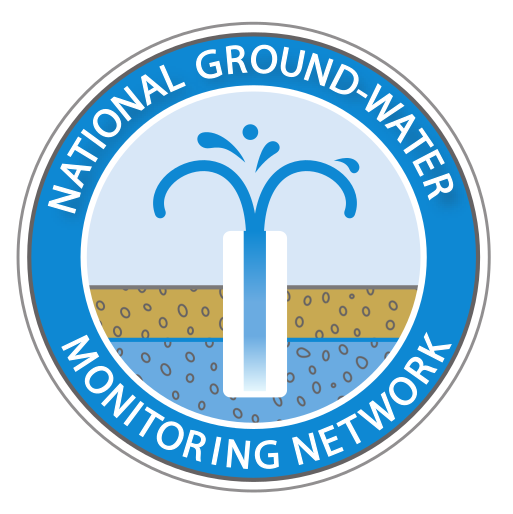Alaska Department of Natural Resources
Link to: Alaska Department of Natural Resources Groundwater Information
NGWMN Contact:
Kevin Petrone (Principal Investigator)
(907) 269-8646
kevin.petrone@alaska.gov
Jacob Coate (Data Manager)
jacob.coate@alaska.gov
The Alaska Department of Natural Resources (ADNR), Alaska Hydrologic Survey (AHS), is a water-level data provider to the National Groundwater Monitoring Network (NGWMN). The ADNR collects groundwater data to evaluate changes in groundwater availability, the interaction between groundwater and surface-water, the response of groundwater systems to climate variability, and the effects of natural disturbances on groundwater levels.
The principal aquifers monitored by the DNR and its cooperators include the Alaska Unconsolidated - deposit aquifers (Miller et al., 1999) and the Cook Inlet Aquifer System in parts of Anchorage, Palmer and Wasilla. The Unconsolidated - deposit aquifers (Alaska) are also monitored in Girdwood, Portage, and on the Kenai Peninsula. The Unconsolidated - deposit aquifers (Alaska) are important locally and at the national-scale for multiple purposes, including, but not limited to: sources for water supply, economic development, sources for upwelling to anadromous streams and other surface water bodies, for tracking/quantifying climatic changes, and for responding to natural disasters resulting from fires, earthquakes, and volcanic eruptions.
NGWMN Projects:
2016 Round 1: 7/1/2016 to 12/31/2019
Initial project to become a NGWMN data provider. A network of 23 trend water-level sites and 10 water-quality sites are proposed.
2016 Round 2: 10/31/2016 to 1/31/2021
Project is to perform well maintenance at an existing NGWMN well and to drill a replacement for a NGWMN monitoring well.
NGWMN Presentations:
Alaska Groundwater Monitoring Program. Kevin Petrone, Terry Schwarz, Jacob Coate, Jim Vohden and Roy Ireland, Workshop in Hydrology in Yukon, Canada (WHY 2020), February 19-20, 2020
Site Selection and Classification
Site Selection and Classification
The NGWMN framework is built around subnetworks with specified level or frequency of monitoring.
Monitoring categories indicated by the NGWMN include trends wells (high frequency to determine changes in groundwater levels over time) and surveillance monitoring (periodic "census" of groundwater conditions at lower frequency of monitoring). All wells maintained by ADNR hydrologists in the NGWMN network have continuous monitoring by pressure transducer and therefore are considered "trend" monitoring wells.
Alaska has a sparse network of groundwater monitoring network that we have been working to expand. Recently added wells were selected based on prior monitoring record, available construction and lithology, and accessibility by ADNR hydrologists. Wells are located on borough, municipality, federal (BLM, USFS), and state-owned lands. Currently, the well network is concentrated in southcentral Alaska, but expansion is planned for other regions of Alaska as suitable wells become available.
NGWMN wells are further classified into well classification subnetworks defined in NGWMN framework document:
- Background subnetwork
Monitoring points that provide data from aquifers or parts of aquifers with no (or minimal) anthropogenic effects.
- Suspected Changes subnetwork
Monitoring points that provide data from aquifers or parts of aquifers that may have been affected by man's activity, but that is not documented or conclusive.
- Documented Changes subnetwork
Monitoring points that provide data from aquifers that have documented anthropogenic effects.
Based on this classification, the AK NGWMN wells located in the Anchorage Bowl and Matanuska-Susitna Valleys may be affected by groundwater pumping. Drawdown in some wells has already been established and coincides with known pumping events, falling into the "Documented" subnetwork. Other wells near population centers are in the "Suspected" subnetwork until further baseline data can be collected to determine if water levels are affected by pumping.
Three wells on the Kenai Peninsula in unconfined surficial aquifers within the U.S. National Forest are located far from population centers and local pumping and are considered "background" sub-network wells.
References
Miller, J.A., Whitehead, R.L., Gingerich, S.B., Oki, D.S. and Olcott, P.G., 1999, Groundwater Atlas of the United States Segment 13 Alaska, Hawaii, Puerto Rico and the U.S. Virgin Islands, accessed on December 23, 2015, at http://water.usgs.gov/ogw/aquifer/atlas.html
Data Collection Techniques
Data Collection Techniques
When making and recording water-level measurements in the field, the value measured should be compared to prior values to make sure the value is within a reasonable range of previous values. Water-level measurements that are anomalously high or low should be repeated to verify that the reading is correct. Anomalous values should also be noted in the field notebook/data sheet with an explanation, if known. Water-level measurements are recorded in a dedicated field notebook, field datasheet, or electronic equivalent and maintained to preserve historical measurements as an archive. When water levels of all the wells within the National Groundwater Monitoring Network have been measured (typically every three months), the data are compiled and uploaded through the uploader developed by DNR.
Details on Data Collection Techniques are avaliable here.
Data Management
Data Management
Data are collected from each well by data download using datalogger-specific software (e.g. in-situ and solinst) in csv format. In the office, data are transferred to spreadsheets, barometric pressure corrections are performed, and daily average water level are calculated. Data are uploaded to the state groundwater database with an uploader template created by ADNR. These data are then harvested by the USGS/NGWMN network.
Other Agency Information

